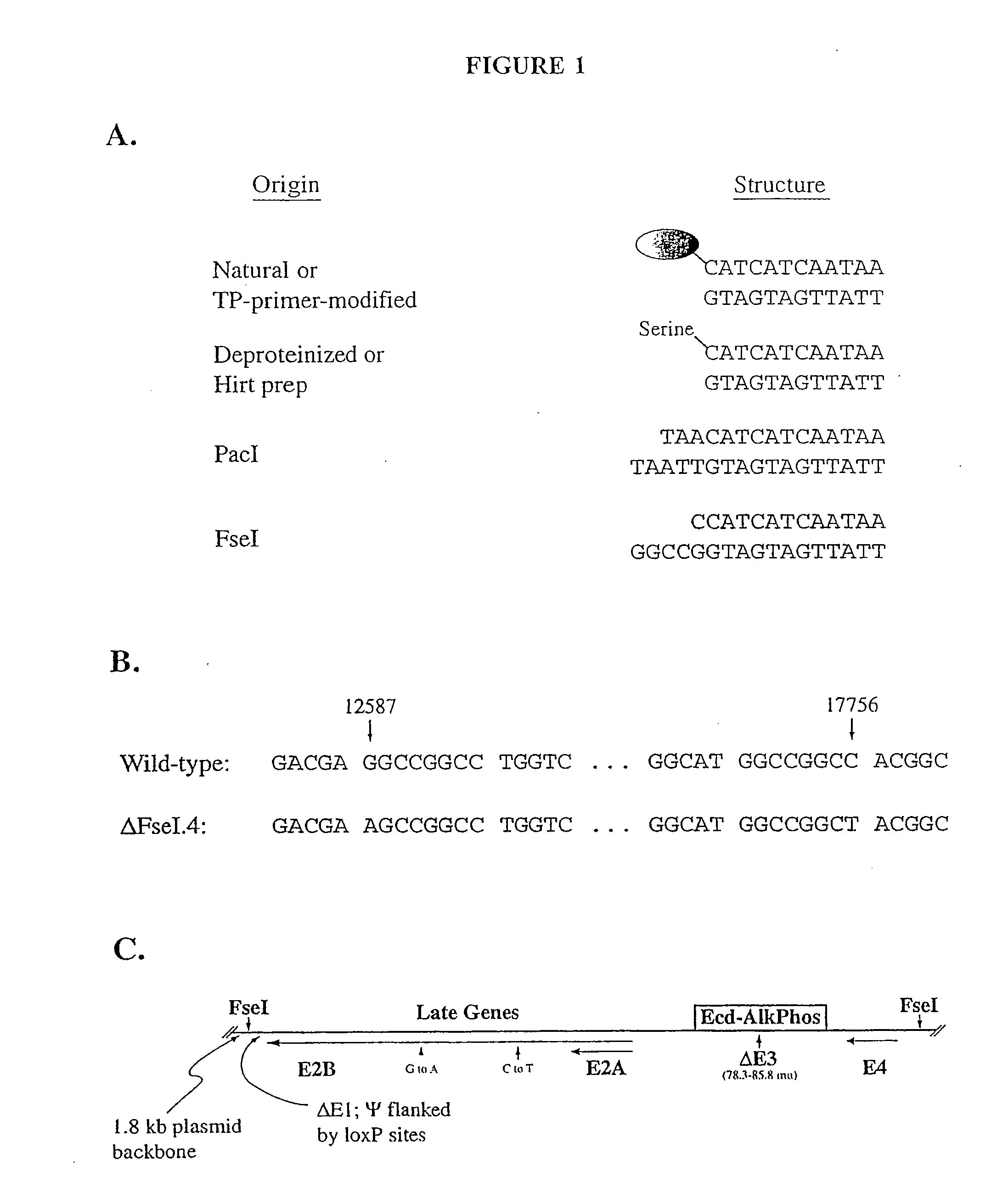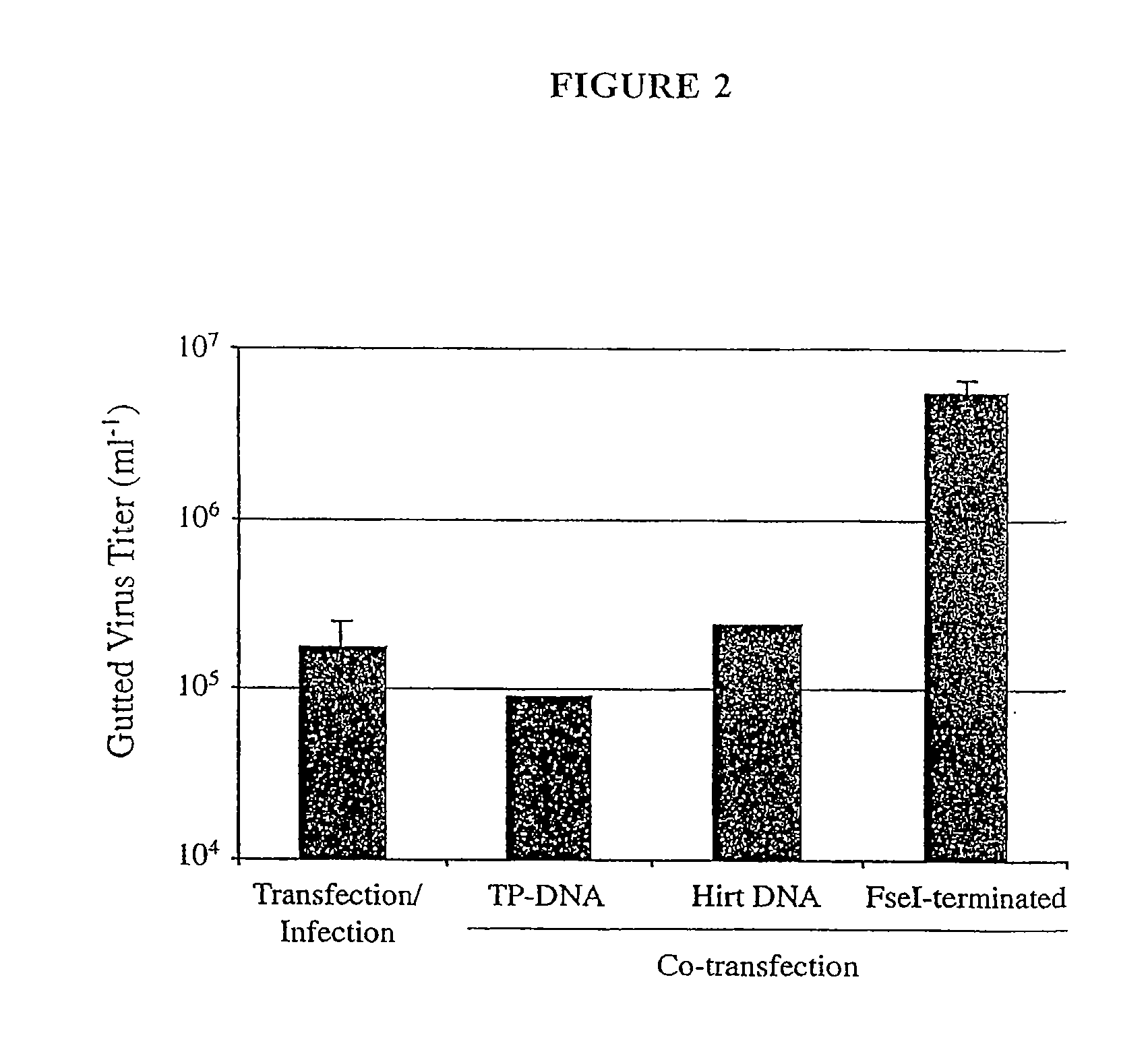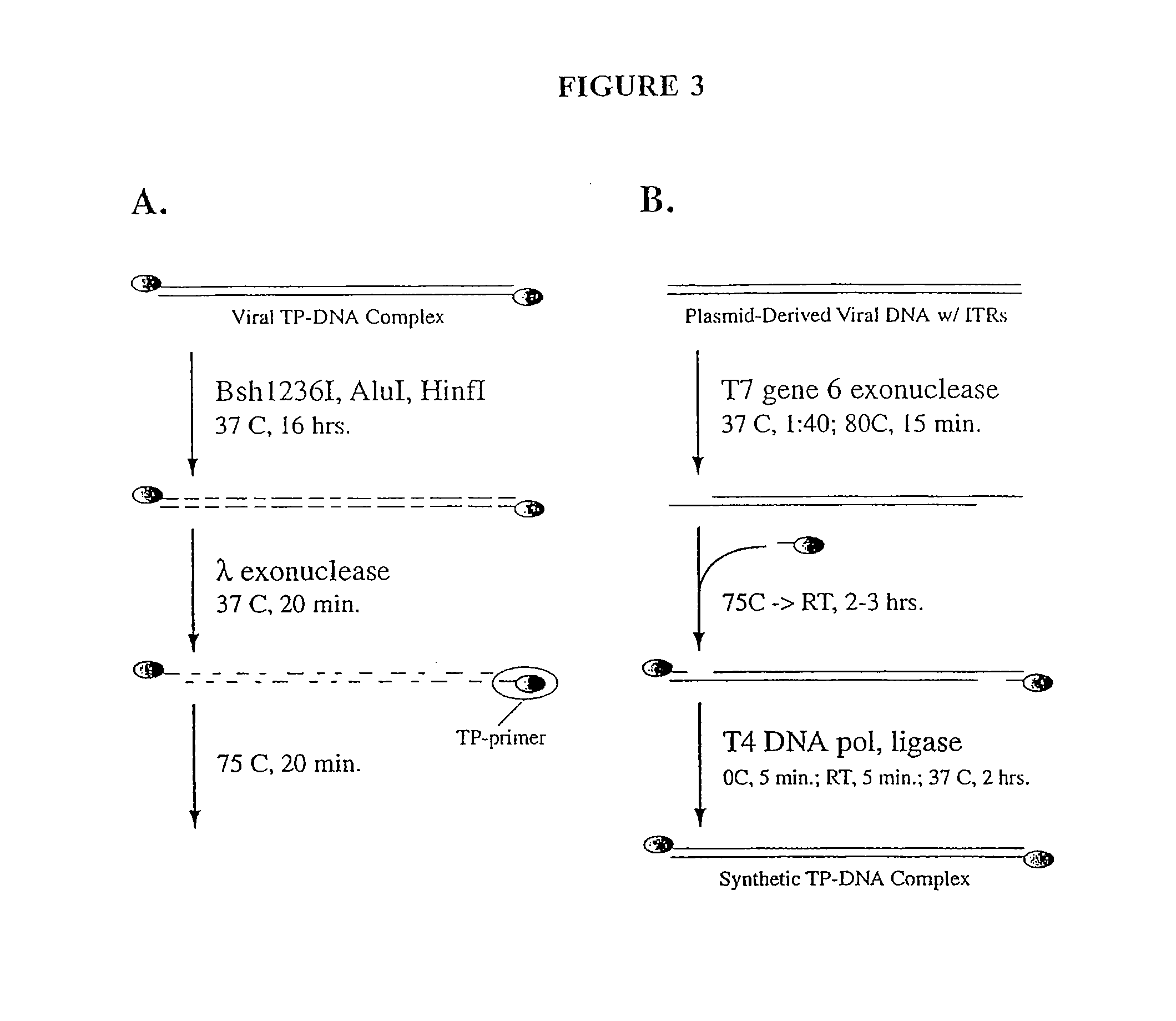Production Of Viral Vectors
a technology of viral vectors and plasmids, applied in the field of viral vector production, can solve the problems of limiting the usefulness of ad vectors for many applications, limiting the cloning capacity of these vectors to 8-10 kb, etc., and achieves the effects of increasing viral production/recovery, reducing the cost of cloning, and improving the purity of viral vectors
- Summary
- Abstract
- Description
- Claims
- Application Information
AI Technical Summary
Benefits of technology
Problems solved by technology
Method used
Image
Examples
example 1
Generating Gutted and Helper Virus with Identical Termini
[0119]This example describes the deletion of internal FseI sites in the nucleic acid sequence of an Ad5-based helper virus, and insertion of this nucleic acid sequence into a plasmid such that it is removable with FseI.
[0120]The FseI recognition sequence, “GGCCGGCC”, contains cytosine residues and can be arranged to overlap with the first nucleotide of viral DNA so that only one additional base pair is attached to viral DNA removed from plasmid vectors with this enzyme (FIG. 1A). In addition, FseI is rare in cloning vector polylinkers and mammalian sequences, so it is ideal for removal of gutted viral genomes from plasmid vectors. FseI has been used previously for linearization of viral shuttle vectors, which contain a portion of the Ad genome; however, it could not be used to liberate the entire Ad5 genome from plasmid DNA, because the Ad5 genome contains two FseI sites.
[0121]In order to remove the FseI sites in the (+)lox(+)...
example 2
Rescue of Helper-Dependent Ad Vectors Using Plasmid-Derived Substrates with Corresponding Termini
[0124]This example describes the rescue of helper-dependent Ad vectors using plasmid-derived substrates with corresponding termini. To demonstrate that efficient gutted virus rescue depends on the relative specific activities of gutted and helper viral DNA, a FseI-terminated gutted virus was co-transfected with various forms of helper virus DNA or transfection / infection was performed (FIG. 2). The gutted adenovirus DNA employed was pD2076#2, which contains a gutted Ad genome flanked by FseI recognition sites and carries an inducible beta-galactosidase expression cassette (FIG. 12). This plasmid was digested with FseI, and 4.4 micrograms of digested DNA were transfected into C7 cells.
[0125]For co-transfection assays, 4.4. micrograms of helper viral DNA (either TP-DNA, Hirt DNA, or FseI-terminated DNA) were co-transfected with pD2076#2 DNA. For transfection / infection, helper virus particle...
example 3
Conversion of Plasmid-Derived Viral Replication Origins to Natural, Terminal Protein-Linked Origins.
[0127]This example describes the conversion of plasmid derived viral replication origins to natural, terminal protein-linked origins. This conversion employs “TP-primer”, which is terminal protein DNA linked to single-stranded DNA from the non-template strand of an Ad ITR (FIG. 3A). TP Primer was prepared in the following manner. Terminal protein-DNA complex prepared from (+)lox(+)pol Ecd-AP virus was digested for at least 16 hours at 37° C. with 2.5 U / μg Bsh12361, 1.33 U / μg AluI, and 0.69 U / μg HinfI. Bsh12361 cuts between base pairs 73 and 74 of the Ad5 ITR (CATCATCAATAATATACCTTATTTTGGATTGAAGCCAATATGATAATGAGGG GGTGGAGTTTGTGACGTGGCGCGGGGCGTGGGAACGGGGCGGGTGACGTAG, SEQ ID NO:10), so this digestion results in terminal protein linked to a 73-bp, double-stranded DNA molecule (one of the two strands is as follows, CATCATCAATAATATACCTTATTTTGGATTGAAGCCAATATGATAATGAGGG GGTGGAGTTTGTGACGTGGCG, S...
PUM
| Property | Measurement | Unit |
|---|---|---|
| time | aaaaa | aaaaa |
| time | aaaaa | aaaaa |
| temperature | aaaaa | aaaaa |
Abstract
Description
Claims
Application Information
 Login to View More
Login to View More - R&D
- Intellectual Property
- Life Sciences
- Materials
- Tech Scout
- Unparalleled Data Quality
- Higher Quality Content
- 60% Fewer Hallucinations
Browse by: Latest US Patents, China's latest patents, Technical Efficacy Thesaurus, Application Domain, Technology Topic, Popular Technical Reports.
© 2025 PatSnap. All rights reserved.Legal|Privacy policy|Modern Slavery Act Transparency Statement|Sitemap|About US| Contact US: help@patsnap.com



